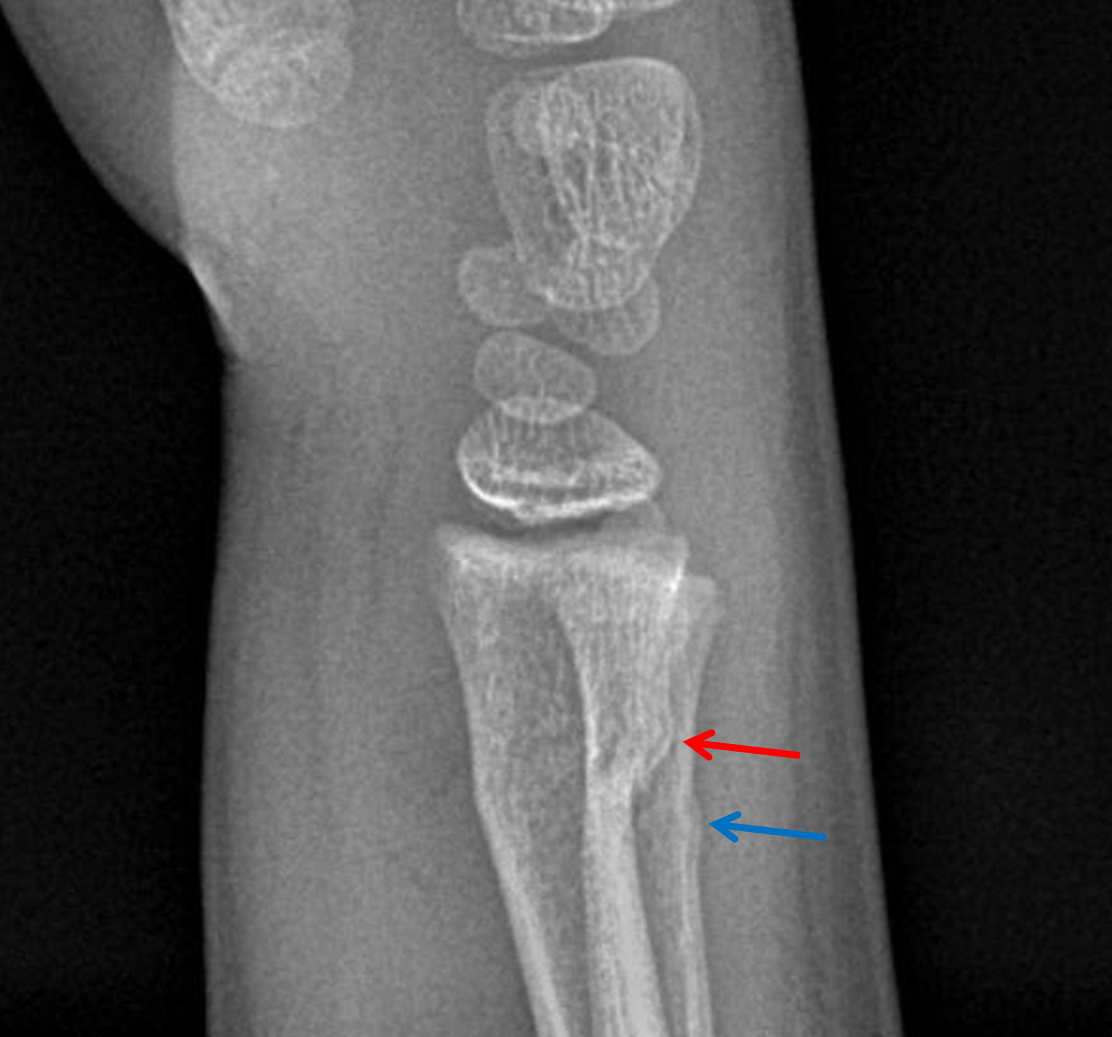

Early management of upper limb fractures in general practice. Limb fracture pattern in different pediatric age groups: A study of 3,350 children.

The frequency and epidemiology of hand and forearm fractures in the United States. Follow-up until the child’s usual range of motion has returned is a safe approach to minimise missed injuries and unanticipated outcomes.It is important to be wary of isolated complete radius or ulna shaft fractures/plastic deformation and always look for a concomitant dislocation of the proximal radio-capitellar or distal radioulnar joints.Complete fractures, fractures involving the growth plate and any fracture with clinical deformity should be referred to an orthopaedic service or emergency department acutely.Discussion with an acute orthopaedic service or referral to the emergency department is recommended for these fracture types. These fractures usually occur in children 15° in children aged 10° in children aged ≥10 years. 5 Also called a ‘buckle’ fracture, torus fractures are characterised by buckling of one or more cortices of the bone as a result of a compressive force, typically a fall from standing height onto the outstretched hand. The anatomical term ‘torus’ refers to a rounded protuberance. Nitrous oxide or intranasal or oral opioids may facilitate splinting and transport in more severe cases. The pain felt by most patients presenting to general practice with a fracture can be relieved with oral paracetamol and nonsteroidal anti-inflammatory drugs, with a small sip of water if fasting for potential surgery. Demonstrating with the uninjured hand first can build trust. Sensation is examined on the first webspace dorsally (radial nerve), and the pads of the index finger (median nerve) and small finger (ulnar nerve). A simple screening aid for neurovascular injury in children is to play ‘rock, paper, scissors, okay?’ 4 ‘Rock’ tests the median nerve supply to the finger flexors, ‘paper’ tests the radial nerve supply to wrist and finger extensors, ‘scissors’ adducts the thumb, abducts the index and middle fingers, and flexes the ring and small fingers to test the ulnar nerve supply to the intrinsic hand muscles, and the ‘okay’ position isolates the anterior interosseous branch of the median nerve with flexion of the thumb and index finger to form a circle. The possibility of non-accidental injury should be considered.ĭocumentation of neurovascular status is essential before and after any intervention, including cast or splint application. Past history may provide insight into pathological fractures. 3 Additional injuries should be sought, such as a distal humerus fracture in association with a fracture at the wrist. It is important to remember that wrist sprains are uncommon in children. The mechanism of injury may suggest the likelihood of fracture as well as type of fracture sustained. The aim of this article is to provide an overview of management concepts and support general practitioners to confidently manage these fractures and refer to orthopaedic services when required. 2įracture management is guided by the fracture pattern and remodelling potential. For children over the age of eight years, the distal radius is the site of 25% of all fractures.

1,2 Forearm fractures occur at a rate of 1.5 per child, with the ratio of affected boys to girls increasing to 5.5:1 at adolescence. The radius and ulna are the long bones fractured most commonly in school-aged children, accounting for 40% of fractures.


 0 kommentar(er)
0 kommentar(er)
